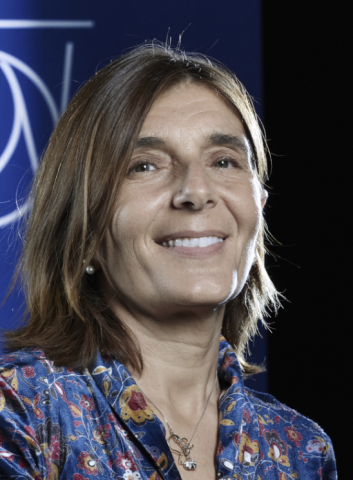Making sure we were ready for Run 3 was the objective we could not lose sight of last year. At the same time, we started a process to set up an IT Strategy – the what we will do, which I hope you will read – and a Target Operating Model – the how, which I will explain here. Coming from outside the world of CERN, it was a steep learning curve for me, and I had big shoes to fill. When we initiated this process, I told our team that our work is like running a restaurant: we need to pay attention to what our customers want, to what they need, to the experience that they have. We need to make sure that they trust that the plat du jour is what they need, is what they like... But what happens in the kitchen is our problem.
We went through a thorough exercise, both internally in the department and by engaging with many of our communities, to help us identify what worked well – we wanted to ensure we preserved that – as well as the pain points to be addressed. It was a real team effort, consultative, engaging, collaborative. I got to know the real spirit of CERN, the passion that drives those who work here, their commitment, their enthusiasm.
We designed the Target Operating Model on six pillars. The first is to follow a people-first strategy by understanding individuals’ key strengths and ambitions and identifying suitable opportunities in the target structure. The second is to enhance strategic engagement and alignment with users, while the third is to adopt a holistic solution-design approach by identifying strategic areas where we should build solutions compared to where we can buy solutions. Number four is to define IT's role in innovation; five is to focus resources effectively; and six is to provide a secure framework for our digital work. These six pillars support our priorities: to strengthen our engagement with our users and partners; to create a data and architecture function to streamline and simplify our technology landscape; to put an agile governance framework in place allowing us to be clear on how we make decisions; and to strengthen our service management making sure that a virtuous loop with our users and partners is in place.
People are an organisation’s greatest asset. Most say that, but how do we stay true to it? We have set up a talent management role to help guide our staff, fellows and students in their career journey and to give our technical talents the opportunity to be exposed to different areas of the departments. We have put in place the people roles framework, which mirrors the four IT department roles described in our strategy. These roles are: provider (to meet the information technology needs of the Organization); optimiser (to enhance production quality services); pioneer (to prepare for the challenges of the scientific programmes’ evolution and the Laboratory’s future); and connector (to increase CERN’s scientific, societal and economic impact). Anyone in the department can dedicate a percentage of their time to serve in other roles, and that work is reflected in their MERIT.
The IT department is now structured around three large clusters:
- Strategy and Executive Governance
- How we do our work – includes innovation, education, engagement, communication, security and governance.
- Resource Management
- Which resources we use to do our work – includes finance, talent management and vendor management.
- Technical Delivery
- What services we provide – includes infrastructure, platforms, software, capacity planning, release management, and service management to increase intra- and inter-departmental technical collaboration and alignment.
This new structure has been designed to increase collaboration across IT groups, enabling innovation to flourish in line with the IT Strategy. The structure of service delivery groups within IT has been recast into four layers within the Technical Delivery cluster. The ambition of this restructuring was to increase intra- and inter-departmental collaboration as well as alignment with goals and objectives.
The new structure came into effect on 1 May, so it is still early days. We are still recruiting for key positions. We are still learning how our new engagement team is building stronger links with experiments and departments, how our project portfolio management can help us monitor our progress against plans to increase transparency and accountability, and how our release and change board will ensure that every IT service and product goes through a rigorous peer review process before it is put in production, to name just a few. But this is our kitchen, our internal organisation, which is designed to help IT continue to be a strong partner to the Laboratory in these changing times. This is a journey we are taking together, and we will learn along the way, adjust and keep moving forward.
This is our commitment and we stand ready to build a close partnership with departments, experiments, civil society, Member States, the overall HEP community and beyond, to ensure that we design, develop and provide results that we can continue to be proud of.

